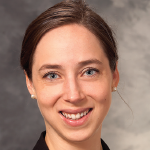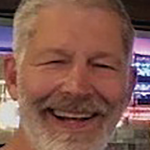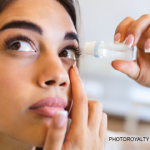
Dr. McCoy
“The main challenge is that lip biopsy is a skill, and as is true for any trade, unless a physician does it on regular basis, they might lose the expertise to perform this procedure,” Dr. Meysami notes. “Sjögren’s [syndrome] is a rare disease, and it might be a challenge for rheumatologists to keep up with this skill.”
According to Dr. Meysami, other barriers that may prevent rheumatologists from getting enough experience to perform lip biopsies include the lack of ACR-approved diagnostic criteria, which limits insurance reimbursement for the test and finding time to do it during very busy clinic hours when rheumatologists are overstretched. An educational video could serve as a convenient refresher on how to do the biopsy. “However, I believe a one-time, hands-on, in-person training session is necessary, [which should be] followed by watching the video on a regular basis,” he adds.
Designing a Video
Dr. McCoy describes her working relationship with Dr. Ike as a “fun dynamic” that began when she was a rheumatology fellow training with him in Ann Arbor. Dr. Ike held weekly procedures clinics on joint injections, ultrasound-guided techniques and labial salivary gland and muscle biopsies that she attended.

Dr. Ike
“In December 2014, I had a cycling accident in Chile that left me with only one working arm for a time,” Dr. Ike says. “Sara stepped up and said, ‘I’ll do your procedures for you. You just supervise me and teach me how.’ Then, for a year, Sara worked with me to demonstrate all of these procedures.
“Bedside procedures are not only valuable in that you are doing something for your patient, but it focuses you on the situation as you’re diving into the procedure. Salivary gland biopsy is an easily mastered skill and very valuable,” he says. “This is an incisional biopsy where we open an area inside the mouth and draw the knife blade over that, and the glands just pop out. You pick them out with a pointy forceps and put a stitch in to close the incision, and that’s that.”
Drs. Ike and McCoy wanted the new video voice-over to sound collaborative, similar to their original workshop, says Dr. McCoy. “This is a discussion-based presentation, with some questions and answers, and more than just teaching with a PowerPoint. That’s difficult to do because we don’t live by each other now. This was just made with love and time,” she says.
Reaching Trainees
The video features tight close-ups on a human volunteer. Each step was filmed by a University of Wisconsin medical school videographer, who also took still photos for the instruction slides.
“We are tapping into the mindset of today’s rheumatology trainees, who would much rather see a video than read a paper or a book,” says Dr. Ike.
“This version is geared toward providers, mainly because of the slides with instructions,” notes Dr. McCoy. “But in the future, we could create a shortened patient version as well.”
Dr. McCoy shows patients some biopsy video before their procedure appointment to explain what will happen and ease their fears about it. Many tell her they have seen images of older, more invasive wedge resection biopsies online.
“I think a shorter version of our new video could reassure them. Patients can come in pretty intimidated and scared about the biopsy, and they leave thinking it wasn’t as bad as they thought it would be,” she says.
Susan Bernstein is a freelance journalist based in Atlanta.
Reference
- Shiboski CH, Shiboski SC, Seror R, et al. 2016 American College of Rheumatology/European League Against Rheumatism classification for primary Sjögren’s syndrome: A consensus and data-driven methodology involving three international patient cohorts. Arthritis Rheumatol. 2017 Jan;69(1):35–45.


